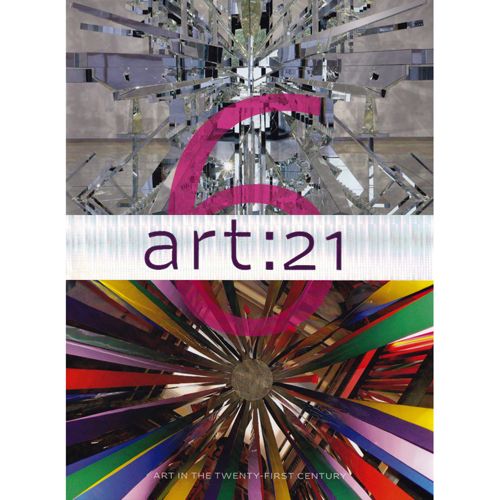I’ve been thinking a lot lately about lingering with images and ways I can get my students to stay with works of art long enough to see and investigate what they are about vs. what they’re representations of. My students often have a definition of research and brainstorming that’s different from my own, so more and more I want them to not only draw inspiration from engaging with works of art but also analyze why some art is more effective, unique, well designed or just flat out better than others.
The advantages of having books in the classroom, whether it’s the handsome series of Art21 companion books or offerings by Phaidon, Taschen, Hyperallergic, and others, is that students are able to interact with art in a different way than when they log onto a bank of computers. They hold an image, even if it’s a reproduction, in their hands. They pass it between their classmates and get their nose close to the printed page to see details. It doesn’t matter if it’s an old book or a new one.
This week, in an effort to get my students to linger, I am asking them to do some research on their own, which I fully realize will involve the most basic steps that include > google.com > Images > (subject/theme/artist) and then selecting entertaining (or hugely popular) images to satisfy the assignment. But when they get back to the classroom, I will have books waiting. I will have prints. I will have the next best thing to being there.
Teaching with contemporary art involves realizing that not everything worth teaching with is available through Google. Some of it lives in the books, periodicals and prints we have had tucked away since the projectors and Smart boards rolled in. But let’s face it, students can’t pass around a Smart board and we can’t spend all our time, literally, in the dark.
Another idea, shared by one of our outstanding Art21 Educators, Don Ball, is to take books like those produced by Phaidon and cut them up, laminating each page to use in the classroom for a variety of purposes. Don asks his students to choose images carefully for different activities. He asks them to have different types of conversations about these images. And like many of us he asks students to draw inspiration from what they see. The printed page offers all of us, in a different way, the chance to perhaps stay with an image longer and say, “I want to think about that.”




